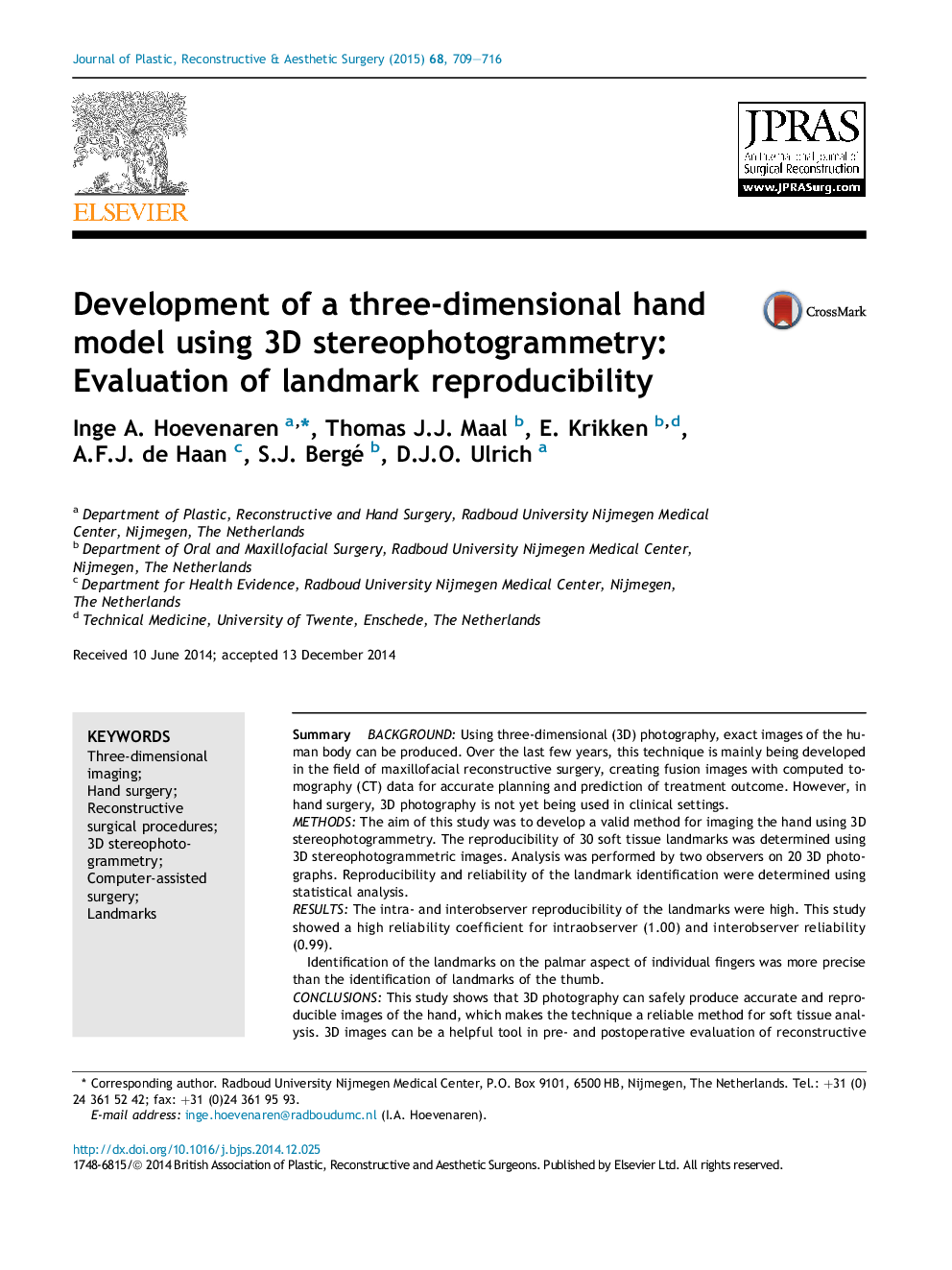| Article ID | Journal | Published Year | Pages | File Type |
|---|---|---|---|---|
| 4117455 | Journal of Plastic, Reconstructive & Aesthetic Surgery | 2015 | 8 Pages |
SummaryBACKGROUNDUsing three-dimensional (3D) photography, exact images of the human body can be produced. Over the last few years, this technique is mainly being developed in the field of maxillofacial reconstructive surgery, creating fusion images with computed tomography (CT) data for accurate planning and prediction of treatment outcome. However, in hand surgery, 3D photography is not yet being used in clinical settings.METHODSThe aim of this study was to develop a valid method for imaging the hand using 3D stereophotogrammetry. The reproducibility of 30 soft tissue landmarks was determined using 3D stereophotogrammetric images. Analysis was performed by two observers on 20 3D photographs. Reproducibility and reliability of the landmark identification were determined using statistical analysis.RESULTSThe intra- and interobserver reproducibility of the landmarks were high. This study showed a high reliability coefficient for intraobserver (1.00) and interobserver reliability (0.99).Identification of the landmarks on the palmar aspect of individual fingers was more precise than the identification of landmarks of the thumb.CONCLUSIONSThis study shows that 3D photography can safely produce accurate and reproducible images of the hand, which makes the technique a reliable method for soft tissue analysis. 3D images can be a helpful tool in pre- and postoperative evaluation of reconstructive trauma surgery, in aesthetic surgery of the hand, and for educational purposes. The use in everyday practice of hand surgery and the concept of fusing 3D photography images with radiologic images of the interior hand structures needs to be further explored.
